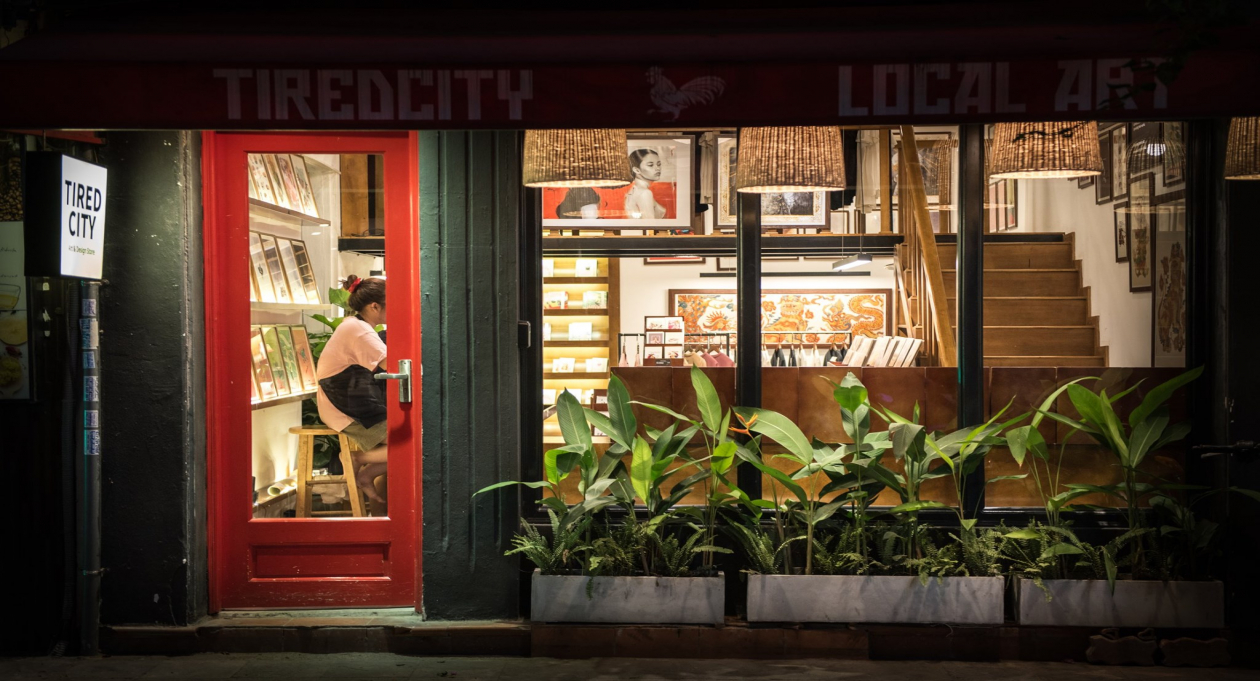Hanoi is a shopaholic’s paradise, and the best places to browse are in the street. There are plenty of Western-style malls selling international brands, which also double as air-conditioned entertainment centers with cinemas, cafes, and restaurants. But every savvy shopper knows that the best bargains and coolest options are found in the markets, whether it’s souvenirs, street food, or silk.
Old Quarter
The Old Quarter of Hanoi is known as the “36 Streets”, most of which are named after craft guilds and industries. These streets date back hundreds of years and are the center point around which the capital city expanded. Far from outdated, the 36 Streets of the Old Quarter are still a whirlwind of trade and activity, an economic hub crosshatched by tiny alleys and powerlines.
Head to Hang Bac or Silver Street where artisans have melted and hammered silver into jewelry for hundreds of years. Some of the manufacturing technology has changed, but much has remained the same. Old-style pagodas and red-roofed communal houses still line the street.
“Shoe Street” is on Hang Dau. Here you’ll find knockoff brand names and handcrafted leather sandals. Dress shoes, shower shoes, flip flops, stilettos… it’s all here, but in Vietnamese sizes. Best of luck to Western feet!
Hang Gai is Silk Street, teeming with tailors and boutiques selling some of the highest-quality silk in the city. In the French Colonial period, Hang Dao was referred to as the “Silk Road”, where sellers specialized in pink- and red-dyed fabrics, including silk. Today, all the silk is sold on Hang Gai, and Hang Dao sells mostly clothes and trinkets, but remains a historical hub.
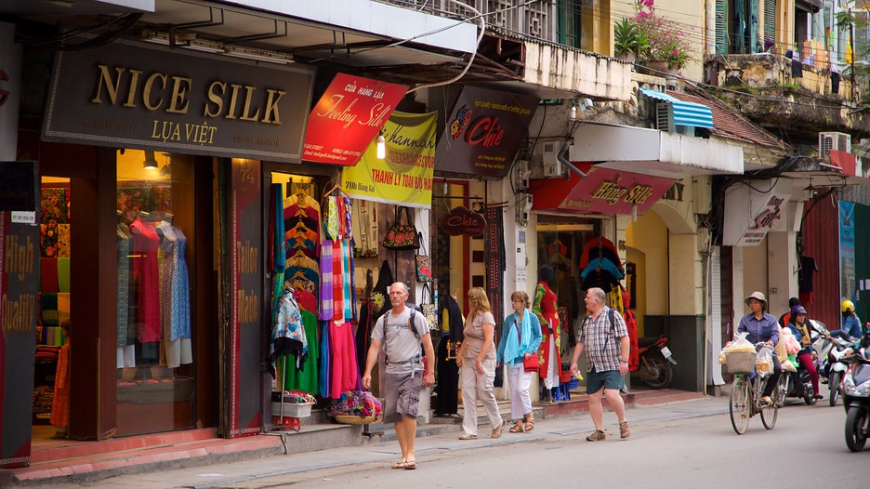
Source: Internet
Markets
Upgrade from individual streets selling single specialized crafts to the labyrinthine grabbag of a Vietnamese market. Start at nearby Dong Xuan Market in the heart of the Old Quarter, a large wholesale market selling anything from fabric, shoes, and clothes to toys, souvenirs, and candies. The alleys around Dong Xuan are as much a part of the market as is the building itself, selling everything from bedding to glassware.
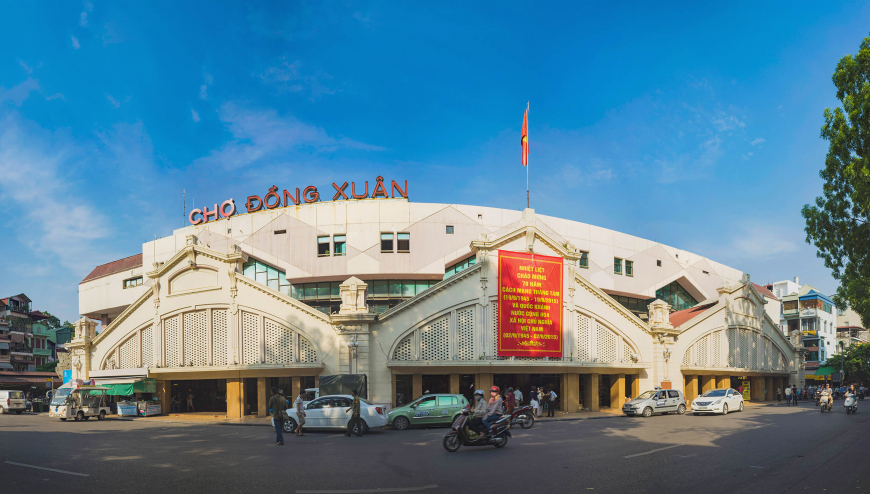
Next up is Long Bien Market, one of the most important markets in Hanoi. Long Bien is the wholesale produce market for the entire city. Households, restaurants, and smaller market sellers all source their fruits, vegetables, and meat here. Produce trucks are unloaded here well after dark, shipped from other parts of the country in time to unload fresh for the early morning rush.
While midnight truckers unload tomatoes at Long Bien Market, others are unloading heaps of flowers in every color at Quang Ba Market. Between midnight and 3am, this market and its surrounding streets transform into a natural perfume factory. Cut blossoms are unpacked still-damp from the field, wrapping the world in fragrance.
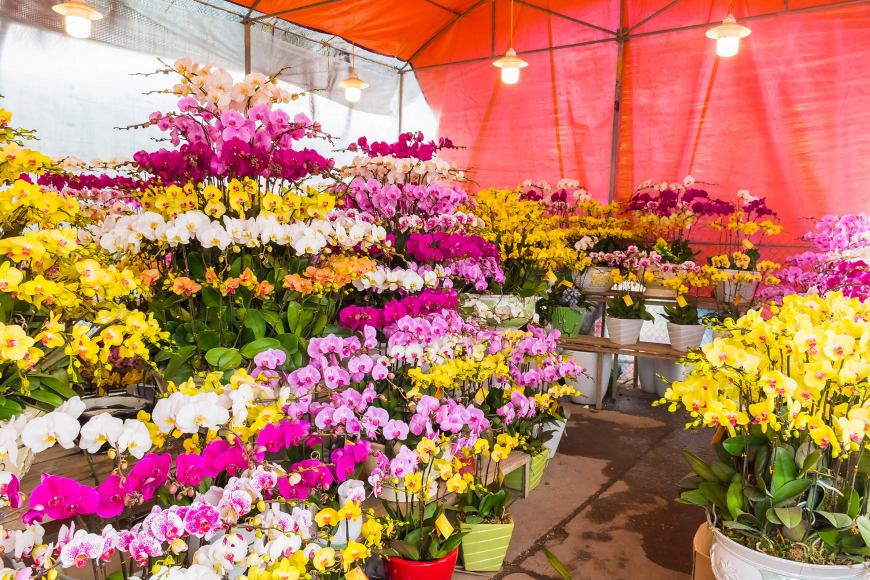
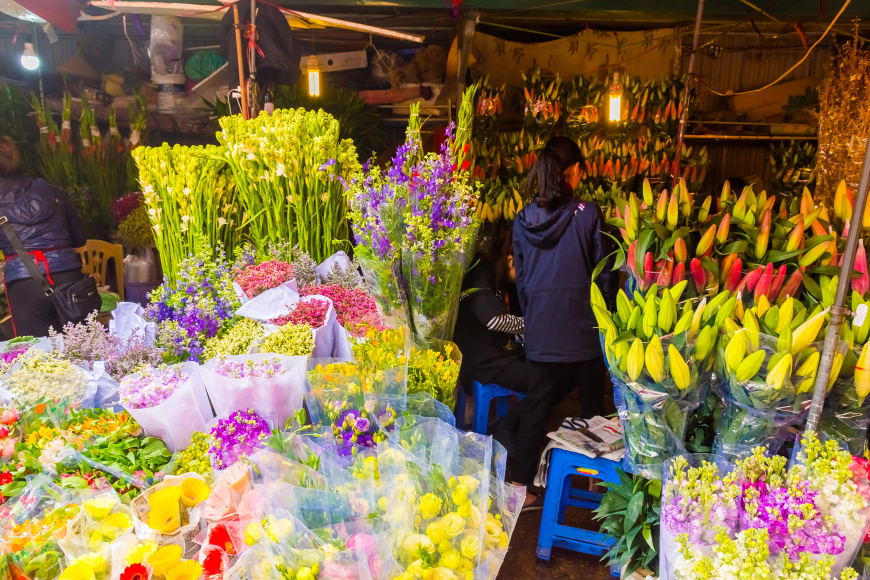
For any and all meals and meal-related inquiries, head directly to Nghia Tan Market. This is perhaps the most famous food market in all of Hanoi city, a veritable paradise for snacks and street foods. If it’s a dish served in Hanoi, it’s probably served in Nghia Tan market, freshly made and absurdly affordable.
Head with a full belly to Phung Khoan Market, which sells everything and sells it cheap. Like Nghia Tan, the price point of Phung Khoan Market makes it popular with young people. Clothes and home goods like bedsheets and kitchen equipment are all sold here, perfect for university students, expats, and long-term travelers who need to stock up and decorate their new flats.
Local Souvenirs & Handcrafts
Hanoia
Hanoia exists to honor the ancient Vietnamese art of lacquerware by carrying it into the international market. The traditional art form of lacquerware dates back many thousands of years, and was originally used as a practical means of adding durability to functional items. Now, Hanoia seeks to bring the artform to new heights. Working with a dedicated team of craftsmen from a historical village in Binh Duong Province that has been producing lacquer art since the 14th century, Hanoia sells contemporary versions of traditional art for a variety of products, from home decor to jewelry.
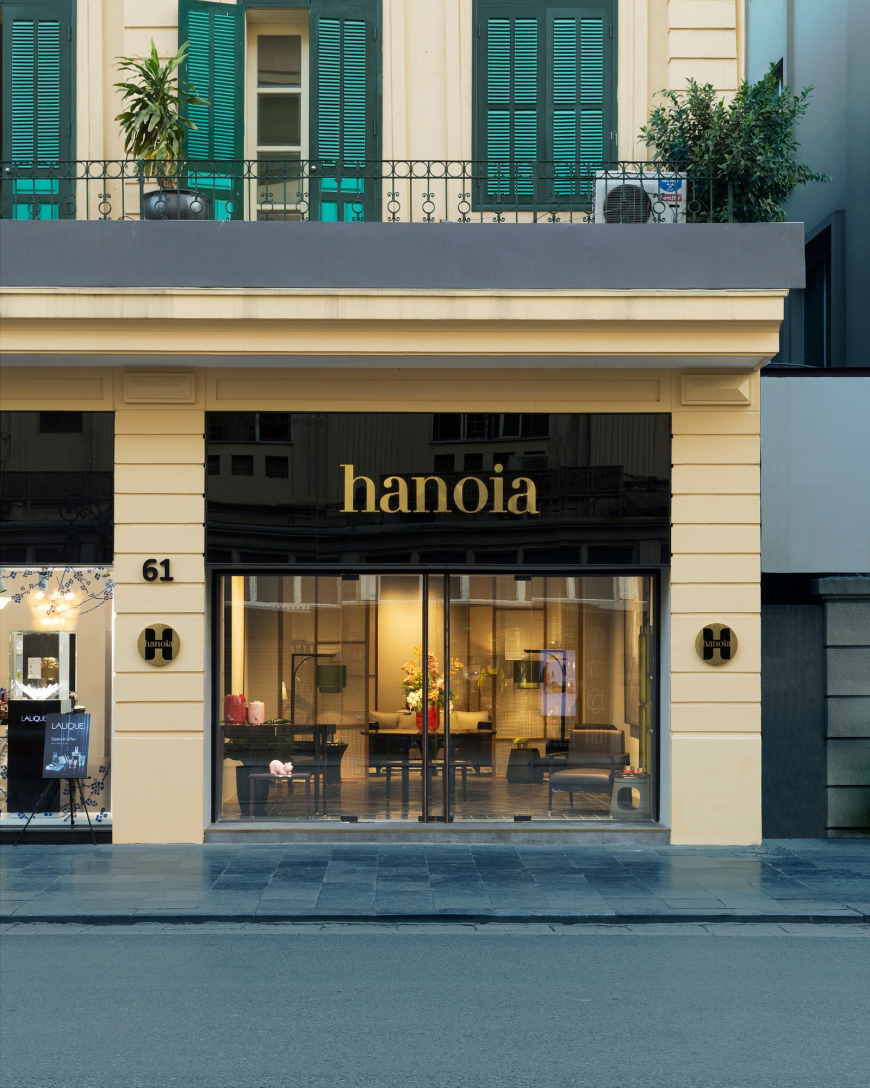
Source: Facebook - Hanoia
Collective Memories
This strange shop of tchotchkes and curios was founded by a travel writer and a photographer who fell in love with their own country while traveling on assignment. The founders strongly value cultural individuality and hyper-local identity, and seek to use their shop as a counterbalance to the homogenization of globalization. Collective Memories offers an eclectic assortment of goods: hand-stitched and painted clothing, wood-fired cups, board games, art prints, chili sauce, magnets… it’s a veritable treasure trove, the kind of place a curious or sentimental traveler can lose an entire afternoon too. The stock is curated and rotates regularly like a museum or a gallery, allowing a varying talent pool of craftsmen to be platformed for an international audience.
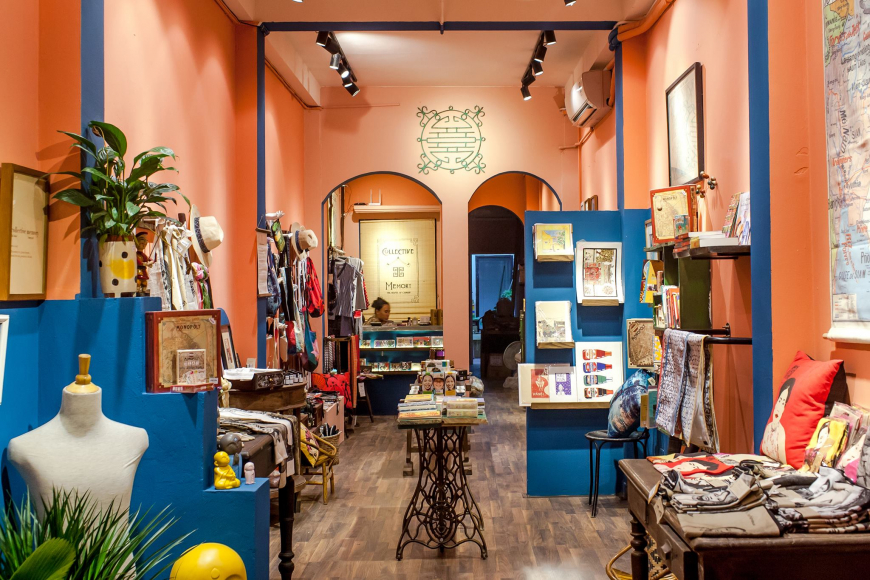
Source: Facebook - Collective Memory
Tired City
Tired City sells original artwork from young Vietnamese artists and illustrators in the form of prints, apparel, tote bags, and stationary. It’s the modern art scene’s answer to a traditional crafts shop like Hanoia: everything here is 100% original artwork, and all sales directly support a local Vietnamese artist’s career. In addition to financially supporting artists’ careers, Tired City is the founder of Vietnam Local Artists Group, a digital gathering place for creative collaboration and community.
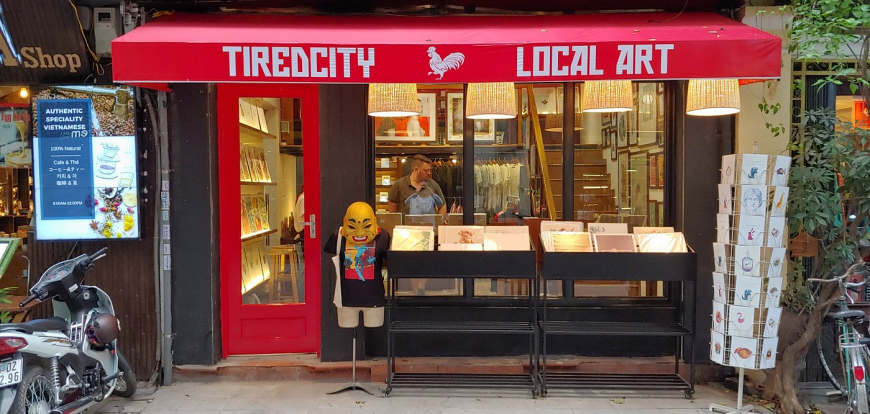
Source: Tripadvisor
Shopping Malls
For a change of pace – or to find Western sizes! – head to a shopping mall.

Source: Vincom
Vincom Center on Ba Trieu street is a good default for an in-and-out shopping operation. They’ve got all the standard international brands on offer, and the mall is easy to navigate. Vincom Mega Mall Royal City offers many of the same options, plus much more on the entertainment spectrum. In addition to 800 shops, Royal City also features a massive rainforest-themed indoor water park (the largest in all of Southeast Asia) as well as an ice skating rink, an aquarium, and a cinema. The Vincom Mega Mall is part of the Royal City complex, designed to function as a “miniature Western city” and absolutely earns its slogan: “one destination – all needs – many options.”
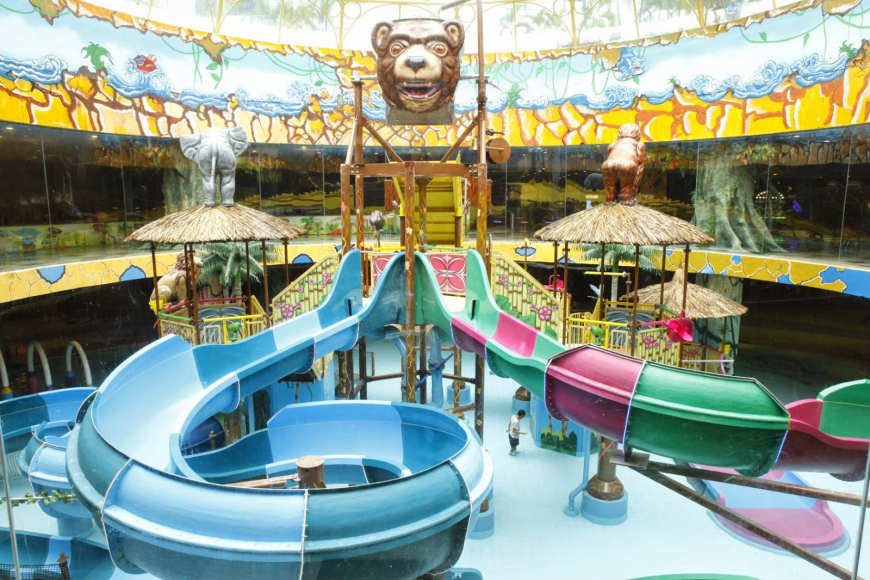
Source: Vinhomes

